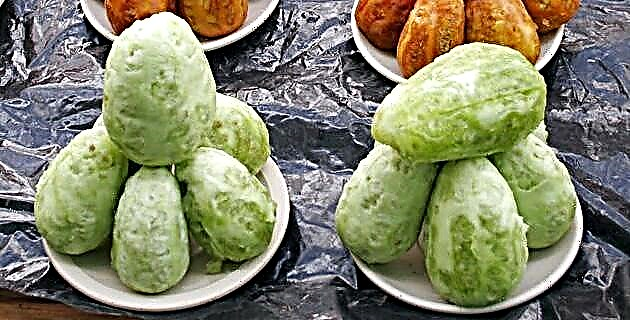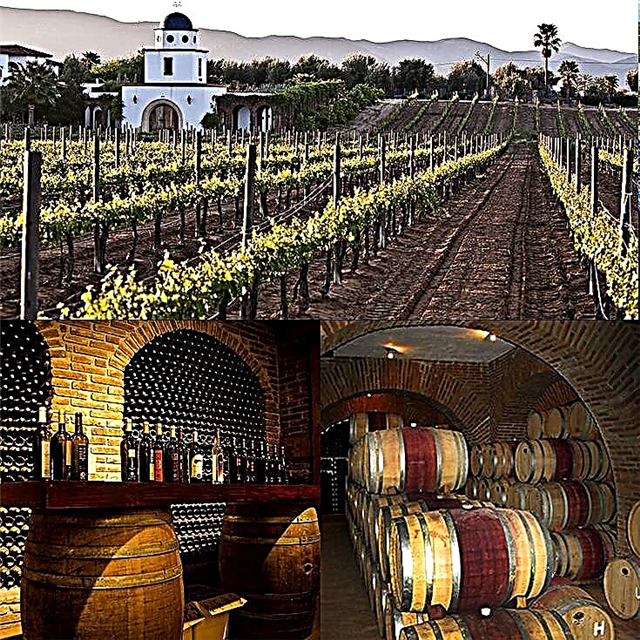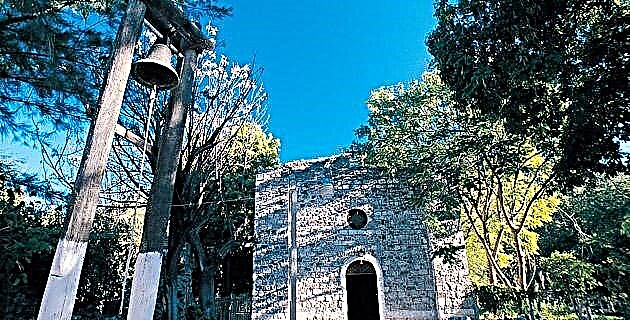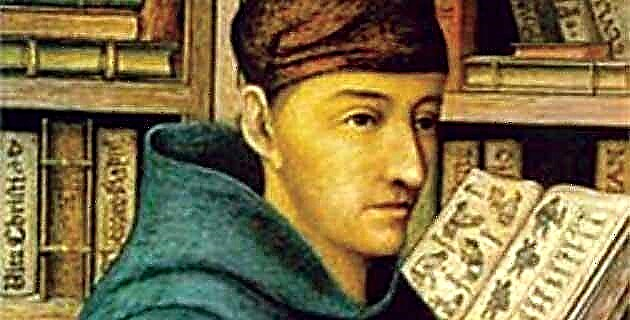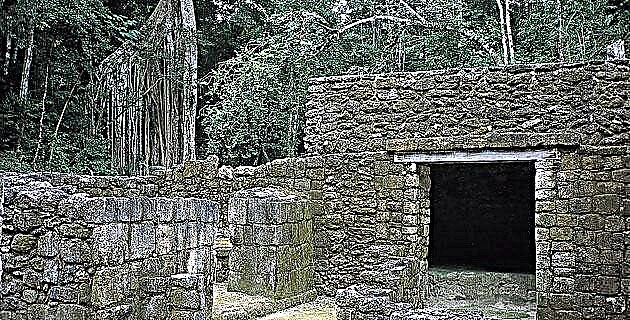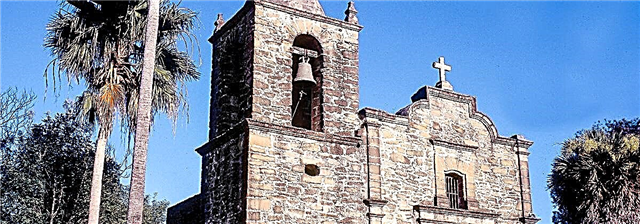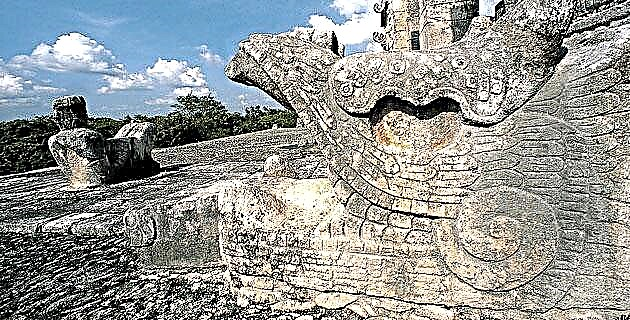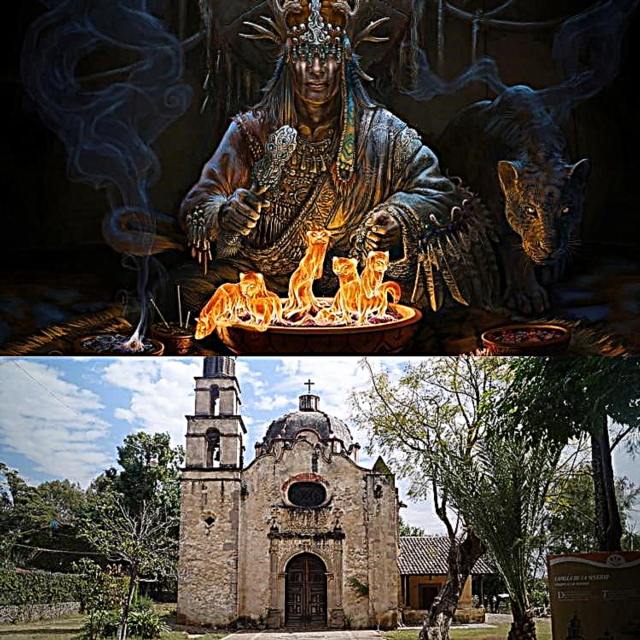He Magic Town Mexiquense de Malinalco, ideal for a weekend getaway from the capital, Toluqueños and other places, it has some particular charms that will leave you fascinated and wanting to repeat the visit. This complete Malinalco guide is to help you use your time in an optimal and entertaining way in the beautiful and welcoming town.
If you want to know the 10 magical towns of the State of Mexico click here.
1. Where is it?
Malinalco is a Mexican town and municipality located in the south of the state of Mexico, which borders the state of Morelos and the Mexican municipalities of Ocuilan, Joquicingo, Tenancingo and Zumpahuacán. It reached the category of Mexican Magical Town in 2010, mainly because of the Cuauhtinchán archaeological site, located in the Cerro de los Ídolos, considered one of the most important in the country, particularly among those that were the scene of pre-Hispanic warrior rites.
2. How do I get there?
To get from Mexico City to Malinalco, you have to drive about 115 kilometers in a trip of approximately 2 and a half hours, whether you go by the Toluca highway or by the Cuernavaca highway. From Toluca de Lerdo, the capital of the state of Mexico, the access to Malinalco is by the Federal Highway Mexico 55, a journey of 60 kilometers to the south. Malinalco is located 80 kilometers from Cuernavaca, capital of the border state of Morelos, heading south and then northwest through the Federal Highway Mexico 95D.
3. How is your climate?
Malinalco is a valley delimited by the Sierra de Ocuilan on the northwest side; to the west its natural border is the Cumbre de Matlalac mountain range and to the south it borders Cerro Grande and other mountains. This geographical arrangement, unique at its altitude of 1,000 meters above sea level, provides it with an average annual temperature of between 20 and 22 ° C, with some hot months. The annual average level of rainfall is between 1200 and 1500 mm.
4. What does "Malinalco" mean?
In the pre-Hispanic Nahuatl league, "Malinalli" is a herbaceous plant whose name literally means "grass to make twine." Artisans in the area still use the plant, with its hard and fibrous texture, to make bags and ropes. Malinalli is also linked to one of the great myths of Mexican pre-Columbian civilizations, Malinalxóchitl, a beautiful but dangerous sorceress who liked to devour the hearts of the Mexica. Malinalxóchitl was the sister of Huitzilopochtli, the Sun god and principal Mexica deity.
5. Do you have prehistoric testimonies?
There are vestiges in Malinalco dated around 3,000 BC. They are mainly found in a cave known as Chiquihuitero. The testimonies found are crude stone tools, basaltic grinding instruments and obsidian and flint waste, rocks that were carved. In different locations around the valley there are cave paintings, although without precise dating. They are made on rocky walls and some were damaged or destroyed by the Spanish, who considered them contrary to the Christian faith.
6. How did the town originate and evolve?
The first inhabitants of the "place of grass to make twine" are believed to have arrived between the end of the early Postclassic period and the beginning of the Late. They were members of the Matlatzinca people settled in the Toluca valley, although the pre-Hispanic temples of Malinalco were built by the Mexica, after conquering the settlement in the 15th century, approximately half a century before the arrival of the Spanish. The patriot José María Morelos y Pavón briefly dispatched to Malinalco during the second stage of the Mexican War of Independence and during the Mexican Revolution, the town was a Zapatista stronghold.
7. What are the main attractions?
The main tourist and cultural attraction of Malinalco is the archaeological zone of Cuauhtinchán, which is located in the Cerro de los Ídolos. This was an important pre-Hispanic ceremonial center, particularly devoted to warrior rituals, which is visited by many tourists throughout the year, particularly since 2010, when the municipality began to improve its service infrastructure as a result of its declaration of Magic Town. The town also has outstanding later buildings (former Augustinian convent, chapels), museums and cultural centers, and natural spaces.
If you want to know what are the 12 things to do and visit in Malinalco, do click here.
8. What is the ritual importance of the Archaeological Zone?
The warrior elites of the Mexican militias were the Eagle Warriors and the Ocelot or Jaguar Warriors and Malinalco was a graduation place for these combatants. The would-be warrior, privileged and honored by the gods once the goal was reached, was required to perform a 46-day fast in order to enter the sacred precinct.
9. What is the most important building in the archaeological site?
The main temple of the archaeological settlement of Malinalco is an almost unique jewel in the world, since it is a monolith, that is, it is carved from a single stone. It is the only temple in the Western World with this characteristic, joining a few other examples on the planet in this original and laborious architecture, among which are the city of Petra in the great valley of the Dead Sea in the territory of Jordan, the temples of Ellora in southern India and the Abu-Simbel temples of ancient Egypt.
10. What other interesting things does the main temple of Malinalco have?
At the entrance of the temple there is a forked tongue, to the east there is a sculpture of a serpent's head with the remains of the image of a warrior, while on the west side there is a large pedestal with the remains of another sculpture of a combatant. These sculptures are supposed to have been used as standard bearers. In line with the main ceremonial function of the building, of initiation of the warrior elites, inside the temple there are several sculptures of eagles and jaguars. There is also a hole that is believed to be the place where the heart of the sacrificed was placed.
11. Are there other monuments?
Apart from the main temple, there are other monuments, mainly those identified with the numbers I, II, III, IV and V. Monument No. II is a truncated pyramid with a single central staircase, with alfardas. It is made of stone and covered with stucco, the calcium-based coating widely used by the builders of pre-Hispanic Mexico. Monument No. III consists of two rooms, one rectangular and the other circular. The first large room was decorated with a mural painting and a wide bench runs along three of its four sides, with a division on the north side that gives access to the circular room. In this the cremations of the deceased warriors were carried out.
12. What is the most interesting thing about Monument IV?
Monument No. IV is a rectangular semi-monolithic platform, approximately 280 m2, which has in its central part two elongated monolithic bases in the shape of sarcophagi. It is believed that this esplanade was the venue for the netonatiuhzaualiztli, the festival in honor of the Sun that was celebrated every 260 days.
13. How important is monument No. V?
The circular stone platform of this monument was the scene of the fighting between the warriors Aguilas and Jaguares and the prisoner combatants. Many of these combats were practically a sacrifice ceremony for the captured warriors, since they were tied by one foot or by the waist in the center of the platform, with a stick as a means of defense, while the warriors Eagles and Jaguars could use their weapons of war.
14. What other attractions stand out in Malinalco, apart from the archaeological zone?
The town of Malinalco is very welcoming, with its cobbled streets, its multi-colored houses and its colonial religious buildings. The temples include the convent founded by the Augustinian friars, the Church of the Divine Savior and several chapels. Other attractions are the University Museum and the Luis Mario Schneider University Cultural Center, the Living Museum and the Malinalxochitl House of Culture.
15. Who was Luis Mario Schneider?
Don Luis Mario SchneiderZacouteguy (1931 - 1999) was an Argentine intellectual who settled in Mexico in the 1960s, where he developed fruitful work as a museologist, writer, critic, researcher, collector and editor. He built a country house in Malinalco and became fond of the town, in such a way that he was expanding his property, where he gathered his vast library, his paintings and a large number of objects that he collected throughout his life. Don Luis Mario Schneider lived his last 20 years in Malinalco, becoming the cultural leader of the community.
16. What can you tell me about the Luis Mario Schneider University Museum?
This institution, opened in 2001, was the first extramural museum of the Autonomous University of the State of Mexico (UAEM). It works in what was the property of Schneider, on the corner of Amajac and Agustín Melgar streets, near the access to the archaeological zone, which was donated to the university by the intellectual, along with a good part of its cultural heritage, now exposed on the site. The museum is also a center for the development of academic and cultural projects and a means of disseminating university and community knowledge.
17. What can I expect at the Living Museum?
The Museo Vivo los Bichos de Malinalco is a conservation space aimed at putting visitors and residents in contact with the most representative species of the region. It works in what was a large house owned by another pioneer of the museum in Malinalco, Don Lauro Arteaga Bautista, who 30 years ago proposed that his house become a cultural enclosure of this nature. The museum has a collection of insects, aviary and reptilians, and its exteriors show the regional flora. There is also a shop where you can buy a souvenir.
18. What activities does the Casa de Cultura Malinalxochitl carry out?
This house is one of the most historic buildings in Malinalco as it has been a residence, a revolutionary headquarters, an educational institution and a cultural center. The house has a beautiful patio with arcades and its spaces are used for different cultural manifestations of the town. Malinalco has skilled craftsmen in wood carving, who work and exhibit their works in the House of Culture.
19. What attractions does the Augustinian convent have?
This building was built by Augustinian missionaries in the 16th century and has a striking façade or pilgrim portal with 7 arches and an ornate border with shields and high-relief anagrams. The interior of the temple is both sober and monumental, standing out the main altar, in neoclassical style, and some murals.
20. Is it true that there are very interesting chapels in town?
Malinalco has a set of chapels that can be seen on a walk to admire their beauty and perhaps enjoy their private party, if you are lucky enough that your trip coincides with a community celebration. The list includes the chapels of Santa María, San Pedro, San Guillermo, San Martín, La Soledad, San Andrés, San Juan, Jesús María and Santa Mónica. Each neighborhood makes its festival with music, traditional dances and fireworks.
21. Is it true that they use hallucinogenic mushrooms?
As in other Mexican communities, in Malinalco some ancestral ceremonies are practiced by shamans and healers with which healing is sought and the expulsion of bad humors from the body, expressions that are allowed as a cultural manifestation. They are mainly carried out during the rainy season, when mushrooms grow easily.
22. What are the nearby municipalities and their main attractions?
Malinalco is on the border with the municipalities, Ocuilan, Joquicingo, Tenancingo and Zumpahuacán, which have some natural and cultural attractions that are worth visiting. Tenancingo is 15 kilometers away, Joquicingo 20, Ocuilan 22 kilometers and Zumpahuacán 35. The main attractions are in Ocuilan and Tenancingo.
23. What is there to see in Ocuilan?
In several communities near the municipal seat of Ocuilan there are small waterfalls and trout farming centers. One of the main activities in this town is the making of natural flower wreaths, grown in the area, which are sold in the nearby Chalma Sanctuary.
24. Is Chalma close to Malinalco?
Malinalco is located just 10 kilometers from the Mexican town of Chalma, on the highway to Tenancingo. The Lord of Chalma is a highly venerated saint and to his sanctuary there are 13 pilgrimages annually, the first on January 6, Epiphany day, and the last at Christmas. The pilgrimages usually close with traditional dances in honor of the Lord of Chalma.
25. What can I do in Tenancingo?
Tenancingo has an excellent climate, suitable for planting flower plants. Roses, carnations, orchids, chrysanthemums and other beautiful flowers from the municipality of Tenancingo will adorn gardens and vases in Mexico, Europe and the United States. In Tenancingo de Degollado, the municipal seat, or in its vicinity, it is worth visiting the monument to Christ the King, the Basilica of San Clemente and the Convent of Santo Desierto.
26. Where do I stay in Malinalco?
In Malinalco there are hotels, several in cabins, where you can comfortably settle in to enjoy the Magic Town. Casa Navacoyan, on Calle Pirul N ° 62, is made up of cozy and beautiful cabins and customers praise its excellent breakfast. Canto de Aves Quinta Boutique is an ecological establishment in El Trapichito, surrounded by greenery. Yolita is a rustic hotel, excellent for those who prefer a simple and natural environment.
27. Are there other accommodation possibilities?
Casa Limón, on Calle Rio Lerma N ° 103, is praised for the beauty of its rooms, the kindness of its staff and the excellence of its cuisine. Regarding the Hotel Paradise Boutique & Lounge, its guests mention its spacious rooms and its picturesque details. At Quinta Real Las Palmas, a small hotel with well-kept green areas, hospitality and personalized treatment stand out. Other good options to stay in Malinalco are Hotel Boutique Casa de Campo, Casa D’Lobo Hotel Boutique, Las CúpulasPequeño Gran Hotel and Posada Familiar María Dolores.
28. Any recommendations for eating?
Los Placeres is a restaurant that stands out for its beauty and the innovation of its cuisine. Their customers have been delighted with the coconut trout, David fillet and nopales gratin, stuffed with pumpkin and Jamaican flowers. Maruka is another restaurant with creative cuisine, ideal for vegetarians.
29. What if I want to eat Mexican?
Las Palomas Restaurant-Bar offers Mexican dishes with a contemporary touch, highlighting the poblano cream, the chiles en nogada and the ancho chile stuffed with chicharrón. MariMali Restaurant is a house run by its own owners, with the traditional Mexican seasoning in its food. Other options are Nipaqui and Huitzilli.
30. What if I want to treat myself to a night of clubs and bars?
If you want to relax and have fun at night after an archaeological and cultural daytime journey, in Malinalco you have some options to spend a quiet and entertaining evening, whether you want just a delicious coffee or if you prefer something stronger. The Arte + Café Gallery and Carajillo Bistro Café are two excellent establishments to enjoy a delicious traditional infusion or a more modern preparation. The Mamitas Bar is one of the most frequented, as well as the Malinalco Brief Space, ideal for a few beers with friends.

We hope you liked this guide and that you spend some excellent days in the Magical Town of Malinalco. See you soon for another delightful informative walk!

